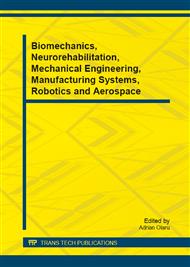[1]
Brenda Laurel et al, Design Research: Methods and Perspectives, MIT Press, 2002, p.334
Google Scholar
[2]
http://www.who.int/respiratory/copd/World_Health_Statistics_2008/en/index.html accessed on July 25 (2012)
Google Scholar
[3]
http://www.who.int/respiratory/copd/burden/en/index.html accessed on July 25 (2012)
Google Scholar
[4]
http://www.ersnet.org/publications/white-books.html accessed on July 25 (2012)
Google Scholar
[5]
http://www.sfatulmedicului.ro/Fumatul-si-efectele-acestuia/peste-600-000-de-romani-sufera-de-bpoc-afectiune-incurabila-cauzata-de-f_2058 accessed on July 25 (2012)
Google Scholar
[6]
http://www.cmr-ct.ro/wp-content/uploads/2011/01/Ghid-local-de-management-al-bronhopneumopatiei-obstructive-cornice.pdf accessed on July 25 (2012)
Google Scholar
[7]
Voicu M. Tudorache, Sanziana Lovin, Marlyce Friesen, Tratat de Reabilitare Pulmonara, Ed. Mirton Timisoara, Romania, ISBN 978-973-52-0574-4, (2009)
Google Scholar
[8]
Haux R. Et al, Health-Enabling Technologies for Pervasive Health Care: A Pivotal Field for Future Medical Informatics Research and Education?, Medical Informatics in a United and Healthy Europe, K.P. Adlassnig et al (Eds), IOS Press (2009)
Google Scholar
[9]
Samir Chatterjee, Healthy Living with Persuasive Technologies: Framework, Issues, and Challenges, J.A. Med.Inform.Assoc.:16:171-178, (2009)
Google Scholar
[10]
Consolvo, S., et al., Activity sensing in the wild: a field trial of ubifit garden, in Proceeding of the twenty-sixth annual SIGCHI conference on Human factors in computingsystems., ACM: Florence, Italy, (2008)
Google Scholar
[11]
Consolvo, S., Klasnja P. et al., Flowers or a robot army?: encouraging awareness \& activity with personal, mobile displays, in Proceedings of the 10th international conference on Ubiquitous computing., ACM: Seoul, Korea, (2008)
DOI: 10.1145/1409635.1409644
Google Scholar
[12]
http://www.is-active.eu/ accessed on July 25 (2012)
Google Scholar
[13]
Brooke, J. "SUS: a "quick and dirty" usability scale", in P. W. Jordan, B. Thomas, B. A.Weerdmeester, & A. L. McClelland, Usability Evaluation in Industry, London: Taylor and Francis, (1996)
DOI: 10.1201/9781498710411-35
Google Scholar
[14]
Holden, R.J. and B.T. Karsh, The technology acceptance model: its past and its future in health care. J Biomed Inform, 2010. 43(1): pp.159-72.
DOI: 10.1016/j.jbi.2009.07.002
Google Scholar
[15]
Lewis, J.R. & Sauro, J. The factor structure of the system usability scale. Lecture Notes in Computer Science, Volume 5619/2009, 94-103
Google Scholar
[16]
Venkatesh, V. et al., User acceptance of information technology: toward a unified view. MISQuarterly, 2003. 27(3): pp.425-478
Google Scholar
[17]
Baecke JAH Burema J Frijters ER, A short questionnaire for the measurement of habitual physical activity in epidemiological studies, Am J Clin Nutr. 1982; 36: 936-942.
DOI: 10.1093/ajcn/36.5.936
Google Scholar
[18]
http://www.ccq.nl/ accessed on July 24 (2012)
Google Scholar
[19]
http://www.euroqol.org/ accessed on July 24 (2012)
Google Scholar
[20]
ATS statement : guidelines for the six-minute walk test. Am J Respir Crit Care Med 2002; 166:111–17
DOI: 10.1164/ajrccm.166.1.at1102
Google Scholar
[21]
P.L. Enright, D.L. Sherril, Reference equations for the six-minute walk test in healthy adults, Am J Respir Crit Care Med, 158 (1998), p.1384–1387
DOI: 10.1164/ajrccm.158.5.9710086
Google Scholar
[22]
Magali Poulain, Fabienne Durand et al, 6Minute Walking Test Is More Sensitive Than Maximal Incremental Cycle Testing for Detecting Oxygen Desaturation in Patients with COPD, Chest. 2003 May;123(5):1401-7
DOI: 10.1378/chest.123.5.1401
Google Scholar
[23]
Ileana Ciobanu, Mihai Berteanu, Advanced Rehabilitation Technology, Applied Mechanics and Materials, Vol.186 (2012), pp.35-45
DOI: 10.4028/www.scientific.net/amm.186.35
Google Scholar
[24]
Alarcos Cieza, et al., ICF core sets for chronic ischaemic heart disease, J. Rehabil. Med. 2004, Suppl. 44:94-99
Google Scholar


